Central of Middle Kingdom
Ni Hao, welcome to Beijing, the iconic city as well as the capital of China!
You will be met by your local tour guide at the arrival hall of Beijing Capital Airport, or railway station, then be escorted to check in your hotel in downtown by a private comfortable vehicle. The rest of today is on your own to relax. If you want to explore nearby, feel free to get some practical suggestions from your tour guide.
Arrival Ideas: At present, there are many international and domestic flights to Beijing. Besides, you can take a high speed train to this capital city from Shanghai (5-6 hrs), Xian (5.5 hrs), Guangzhou (8-9.5 hrs), etc.
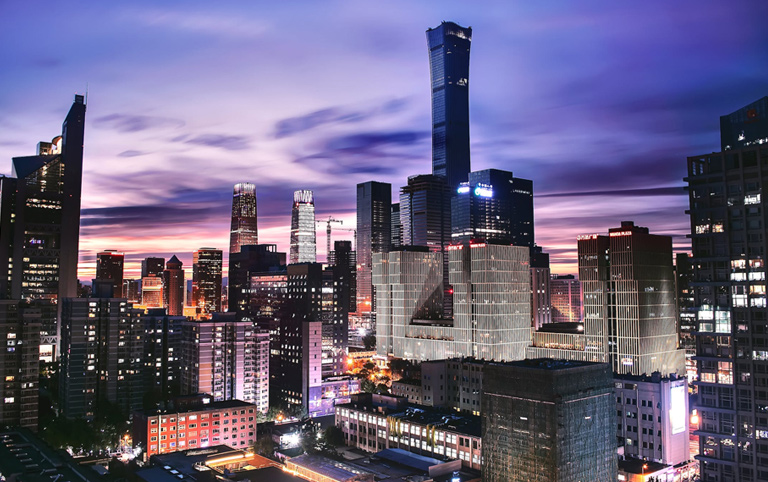 Modern Face of Beijing
Modern Face of Beijing
After breakfast, start to explore the historical face of Beijing with a brief visit to Tiananmen Square, now the largest city plaza in the world. Tiananmen Gate on the northern side of the square was the site where Chairman Mao announced the establishment of the People's Republic of China. Stepping into the Tiananmen, you will see one of the world's five most important palaces the Forbidden City, a huge palace complex of more than 9,000 rooms where 24 emperors of the Ming and Qing Dynasties lived. Pass through various doorways in this magnificent structure to admire the beautiful and well preserved buildings decorated with yellow-glazed tile roofs, white marble bases and splendid colorful paintings.
After lunch, you will go to hop on a rickshaw to experience the Beijing Hutongs - small alleys made by neighboring quadrangle dwellings. Shuttle among different Hutongs to get a feel of the old Beijing life style, visit various antique shops and small boutiques, and truly feel the historical changes of Beijing, also pay a visit to a local family's home in the traditional Hutongs. After Hutong visit, drive to the outskirts of Beijing to spend an enjoyable time in the Summer Palace, the largest and best-preserved royal garden in China. Stroll around ancient pavilions, mansions, temples, bridges and corridors while feasting your eyes on the vast lotus in Kunming Lake and the colorful paintings in the Long Corridor.
Optional activities: 1) You can watch a wonderful Kungfu Show in the Red Theater (Hong Ju Chang) which usually starts at 19:30; 2) Enjoy the classic Chinese art performance of Beijing Opera at Liyuan Theater between 19:30-21:00.
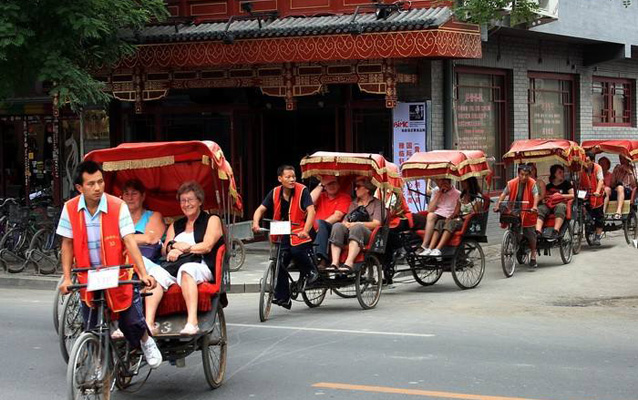 Taking a leisure rickshaw in Beijing Hutongs
Taking a leisure rickshaw in Beijing Hutongs
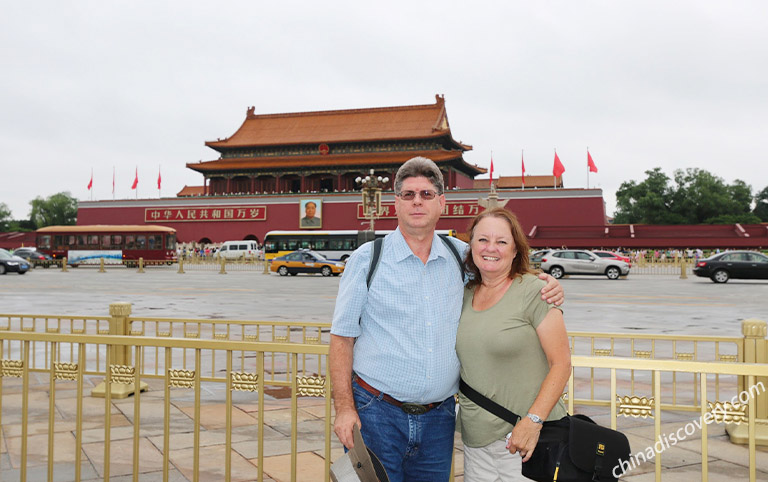 Beijing Tiananmen Square Summer
Beijing Tiananmen Square Summer
After breakfast, drive to the imperial site - Temple of Heaven. It was originally used to pay homage to Heaven and pray for harvest, now becomes a bustling place for locals to take part in traditional activities, such as Tai Chi, dancing, kite flying, water calligraphy, etc.
After the Temple of Heaven visit, drive about 70km to witness one of the Seven Wonders of the World - the Great Wall. Visit the Mutianyu, a less crowded yet well-preserved segment of the Great Wall built in the Ming Dynasty. It will more than live up to all of your expectations! This great wall, linking Gubeikou in the east and Juyongguan in the west, was served as the vital military strategic point in the ancient time. Moreover, Mutianyu section is the longest great wall in China so far and since protection work is well done here, tourists can now see its original appearance and enjoy the real ancient culture of great wall. Also, spectacular natural scenery in Mutianyu Great Wall always impresses visitors here for its abundant vegetation. You will take a cable car to ascend the Great Wall, then hike the most beautiful and interesting part of Mutianyu. It's a wonderful experience to climb up its rising towers to enjoy scenic views and take brag-worthy photos of the wall wriggling along mountain ridges. After the exciting time, descend Mutianyu Great Wall by cable car. (Note: If energy permits, you can hike up or down which takes about 40 minutes to climb steps. Please tell your likes to your travel consultant.)
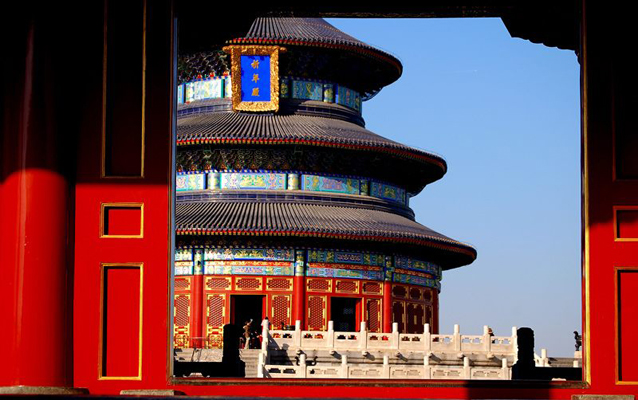 The majestic Temple of Heaven in Beijing
The majestic Temple of Heaven in Beijing
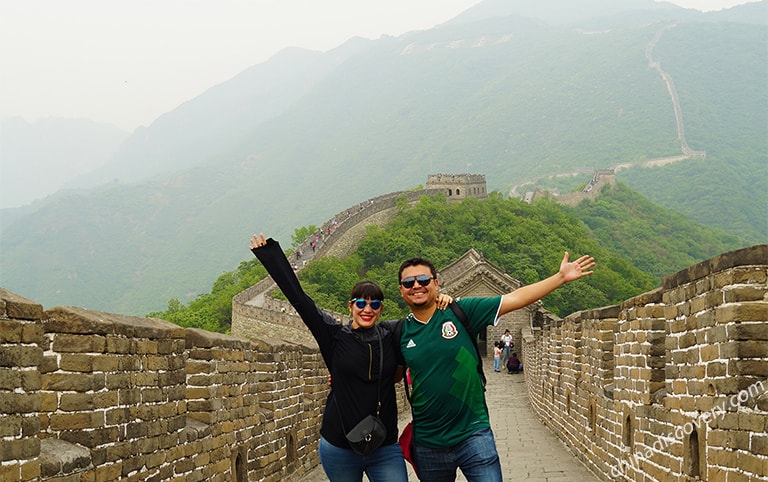 Misty Mutianyu Great Wall
Misty Mutianyu Great Wall
Get up early, you will be escorted to the train station and take a high speed bullet train to Datong from Beijing (about 2-2.5 hours). Upon arrival, be met by your local tour guide, and start to explore Datong highlights.
First site to visit is the famous Yungang Grottoes, a World Heritage site dating back to 5th century. Containing 254 Buddhist caves, Yungang Grottoes stretches about 1 km long. It is filled with about 5,100 precious sculptures - the height of the largest Buddha statue reaches 17 meters and the smallest is only 2 centimeters tall. Most of the sculptures are Buddhas, from which you can be awestruck at their life-like features and blissful smiles. You won't miss Cave No.5 and Cave No. 6 - the highlights of Yungang Grottoes with the entire interiors carved and colored. Facing these jaw-dropping celestial beings in different shapes, you can imagine the painstaking effort taken to produce them.
In the afternoon, drive to Datong city to visit Nine Dragon Screen Wall, made of colorful glazed tiles and depicting nine dragons. It once served as a temple's spirit wall placed in an entrance to inhibit the evil spirit's coming. Now it is the biggest and oldest glazed dragon wall in China. Next, you will visit Huayan Temple - the largest and best preserved monastery built by Khitan during Liao Dynasty. Unlike most traditional Chinese buildings, it interestingly faces east not south, because the Khitan were also sun worshipers. Indulge yourself in the palatial buildings, exquisite frescoes, valued inscriptions in the temple.
Check in to your hotel in Datong downtown.
Nightlife idea (on your own): take a leisurely walk or ride a bike on restored City Wall of Datong. Both new and old city of Datong can be viewed on the wall, showing a drastic difference. The night view seen from the City Wall is more amazing.
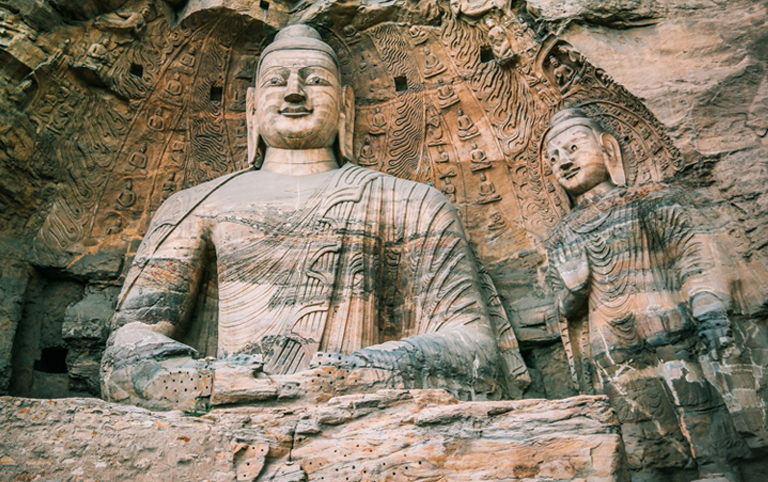 Datong Yungang Grottoes - World Heritage Site
Datong Yungang Grottoes - World Heritage Site
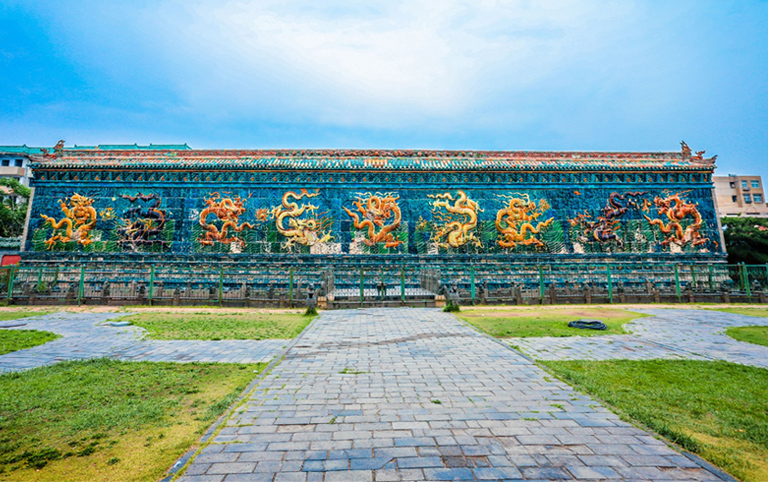 Nine Dragon Screen Wall
Nine Dragon Screen Wall
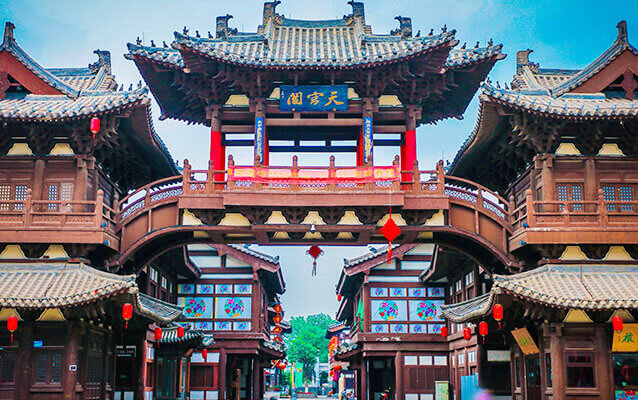 Magnificent Huayan Temple in Datong
Magnificent Huayan Temple in Datong
After breakfast, you will move to Hanging Temple, after 1.5 hours' driving (80 km). Built in 491 during Northern Wei Dynasty, it enjoys a history of over 1,500 years. Miraculously carved into the sheer cliff of Hengshan Mountain, Hanging Temple is one of the most incredible sights in China. Its 40 perilous halls and pavilions lean straight over the canyon. Seeing it from the ground, travelers can't help admiring at the ancient people's wisdom. Moreover, Hanging Temple is featured as the only existing temple with the combination of Buddhism, Taoism and Confucianism. So various sculptures are enshrined in the temple. You have enough time to unlock the mystery of why this unusual temple could stand in the precarious position and explore China's religious culture.
After the exciting experience in Hanging Temple, drive 1 hour to Yingxian Wooden Pagoda, also known as Sakyamuni Pagoda. Built in 1056 during Liao Dynasty (907 ~ 1125) and standing at 67.31 meters high, it is the oldest and tallest wooden multi-storey structure in the world. What amazes visitors most is that the whole structure was made without using any nails, screws, or bolts. The first storey holds an 11 meters high Sakyamuni statue, sitting under a delicate caisson ceiling. For Buddhists, the Wooden Pagoda is a Must-vist site to worship because there are two precious tooth relics of Sakyamuni preserved in it.
After the tour, drive to the train station to catch your high speed train to Pingyao (about 3hrs). You will be picked up by local tour guide and escorted to check in to your hotel. The rest of today is free for you to explore the ancient city of Pingyao.
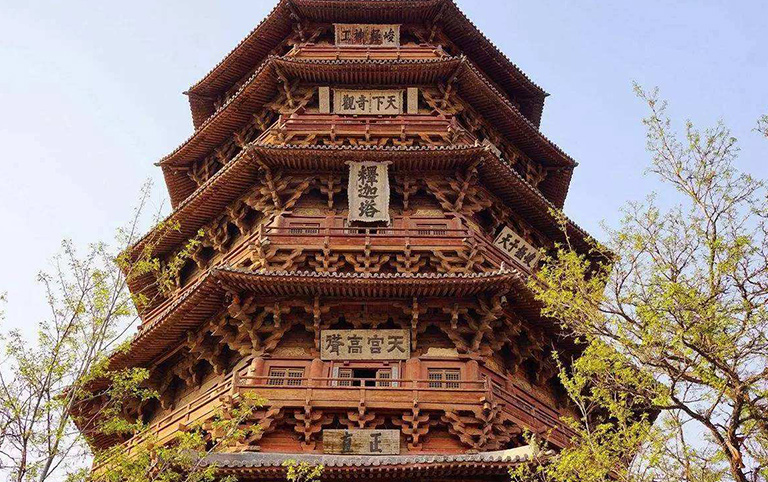 All-wood-made Yingxian Wooden Pagoda
All-wood-made Yingxian Wooden Pagoda
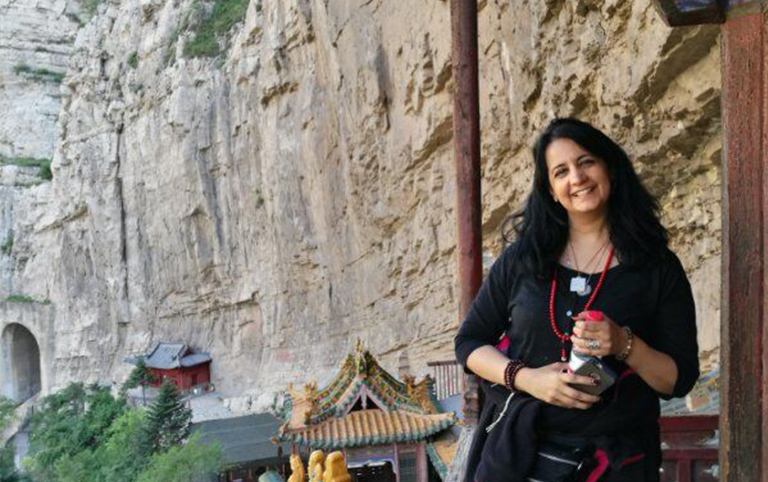 Hanging Temple Clinging to the Cliff
Hanging Temple Clinging to the Cliff
After breakfast, your guide will pick you up to start Pingyao Ancient City exploration. As one of the best-preserved ancient cities in China, Pingyao Ancient City is listed as a UNESCO World Cultural Heritage Site because of its brilliant cultural magnificence. With a history over 2700 years, Pingyao Ancient City still keeps its intact charm: ancient city walls, elegant courtyards, scattered temples, all reflecting the urban planning style between 1368 and 1911 during the Ming and Qing Dynasties. Your tour starts from the Ancient City Wall of Pingyao, where you can have a panorama view of the layout of this town. Then you will move on to the Rishengchang Former Bank, which shows you the original bank system in the past. Next, stroll on the traditional Ming and Qing Street, a cobbled road with old buildings on either side. It's much like tracing back to the former bustle bazaar in the old days. Later, visit the Temple of City God to appreciate the wonderful wood carvings, paintings and sculptures in the old temple.
After Pingyao Ancient City exploration, drive about 15 minutes to visit Shuanglin Temple, where you will be impressed by its large number of clay figures and wooden sculptures of various gods, goddesses and saints.
Return to your hotel after Shuanglin Temple visit.
Optional activity: Enjoy the excellent drama show of Another Glance at Pingyao (19:00~20:30) which presents local life, prosperity and recession of Pingyao during Qing dynasty vividly.
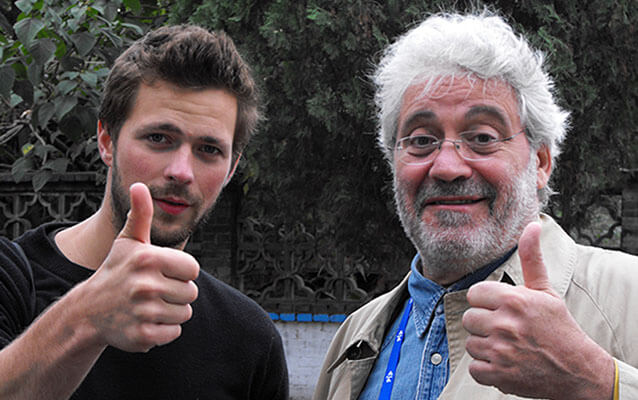 Tourits in Pingyao Ancient City
Tourits in Pingyao Ancient City
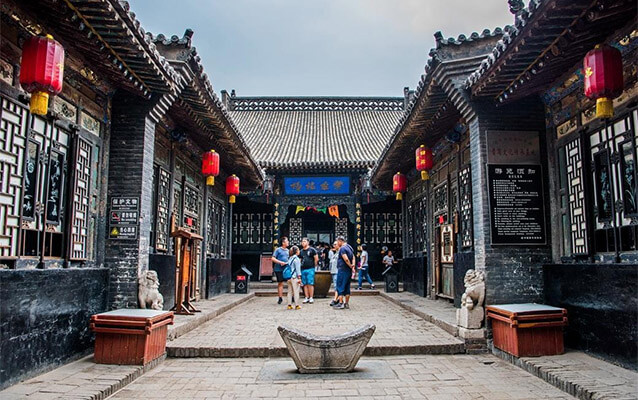 Rishengchang Former Bank
Rishengchang Former Bank
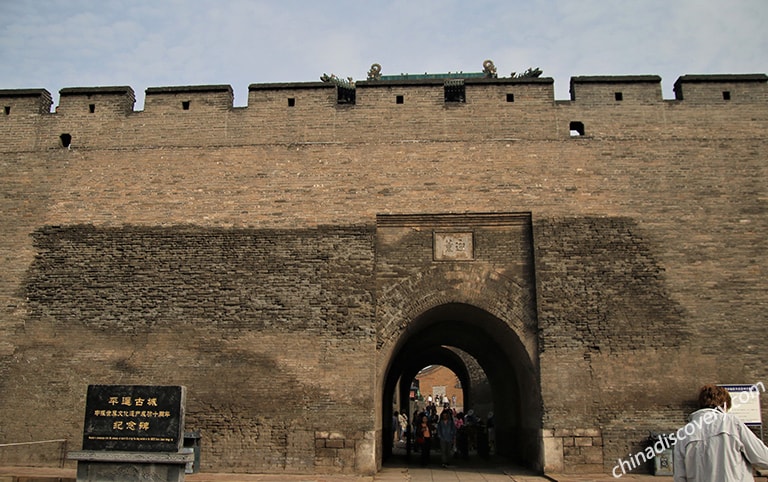 Pingyao Ancient City Wall Shot by Our Customer Elie
Pingyao Ancient City Wall Shot by Our Customer Elie
After breakfast, drive about 1 hour to Zhangbi Ancient Castle, which is a series of tunnels dug to hide out in times of war in over 1380 years ago. You will be amazed by the fabulous feat of architecture and engineering in ancient time.
Later, move to Wang's Family Compound which is reputed as an art museum of traditional Chinese architecture and “Forbidden City in Folk”. It is a building complex of multi-generation endeavor of Jingsheng Wang family through the Ming and Qing dynasties for more than 300 years, including five lanes and 6 forts and 231 courtyards, 2,078 rooms and a street with a total area of 250,000 square meters. Within the courtyards are rooms, kitchens, schools, and prayer pavilions. The architectural layout of the Wang Family Compound inherits the courtyard style formed in the Western Zhou Dynasty (1046 BC~771 BC) – halls in front and bedroom at back which not only provides enough space for social activities, but also satisfies the requirements of the family privacy. Young and orderly, men and women, hosts and workers are accommodated in different areas, which fully reflects the majesty of the official family and the regularity of the patriarchal etiquette in ancient China.
After visiting, transfer to Pingyao Ancient Train Station to take a high speed train to Xian (about 3 hours). Upon arrival in Xian, the local guide and driver will meet you at the train station and take you to your hotel. The rest time is free for you to relax.
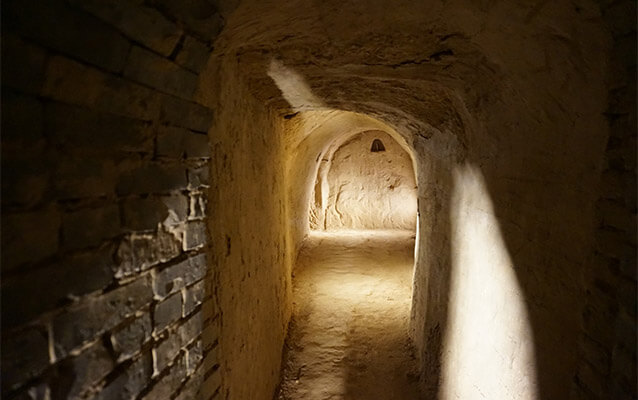 Tunnel in Zhangbi Ancient Castle
Tunnel in Zhangbi Ancient Castle
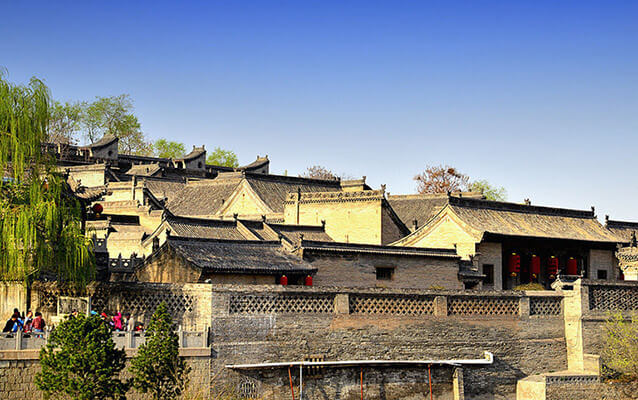 Wang's Family Compound
Wang's Family Compound
After breakfast, drive about 40 km to discover one of the greatest man-made wonders in the world - the Terracotta Warriors and Horses, built by the first emperor of China Qin Shihuang to protect him in his afterlife. Over 8,000 life-size warriors, horses and chariots, buried in 3 pits for more than 2,000 years until uncovered by a local farmer in 1974, form an ancient military army with complete battle units of infantry, cavalry, etc. Standing in front of these figures, one can't help being amazed not only by the ambition of Emperor Qin Shihuang but also by the fabulous artistic skills of ancient Chinese artisans. (Before the Terracotta Warriors Museum visit, you will have a rare opportunity to make a miniature Terracotta Warrior on your own under the instruction of a local potter.)
After lunch, return to Xian to take a wonderful stroll on the Ancient City Wall, the largest and best-preserved ancient city wall in China. Enjoy panoramic views of modern Xian while you leisurely examine this well-maintained city wall which is 12 meters high and 18 meters wide with a total circuit of nearly 14 kilometers. Rent a bike (extra cost: 45RMB) to enjoy a relaxing cycling on the Wall is strongly recommended. The cycling routes and duration are flexible. Feel free to discuss with your tour guide. Leave the City Wall, then go to wander leisurely around bustling and lively Muslim Quarter, a place where you can try different local snacks and explore Muslim culture. Don't miss the Great Mosque of Xian which is a fusion of Chinese culture and Islamic culture, a sacred religious site with huge ancient architectural complex, also a surprisingly quiet land away from the bustling Muslim streets. After the Great Mosque visit, you will be escorted back to your hotel. (If you want to stay more time at the Muslim Quarter for dinner and relaxing, or want to explore the nearby Bell & Drum Towers on your own, please let your tour guide know)
Optional activity: Enjoy a wonderful Tang Palace Dance Show (usually from 8pm to 9pm) after (or without) a hearty dumpling dinner at a local restaurant.
After breakfast, head to Da Cien Temple, a famous Buddhist sutra translation place in Tang Dynasty. Big Wild Goose Pagoda is the most famous building in the temple. With a height of 64.5 meters, the pagoda was built by the famous Buddhist master Xuanzang to reserve classic scriptures he bought from India in early Tang Dynasty. (Xuanzang, the prototype character of Tang Seng in the novel of Journey to the West). Note: it charges extra 30 RMB to climb up the Big Wild Goose Pagoda.
Following is an educational visiting to Shaanxi History Museum. Ramble in the modern exhibition halls to appreciate relics, such as porcelains, paintings, currencies from Zhou to the Tang periods (1100BC to 907 AD). (Note: Shaanxi History Museum may be replaced with other activity or attraction because of crowding tourists during July ~ early September and China's National Day during Oct.1-Oct.7. You may check details with your travel consultant.)
After the tour, be escorted to Xian North Train Station and take a high speed train to Luoyang (about1.5 hours).
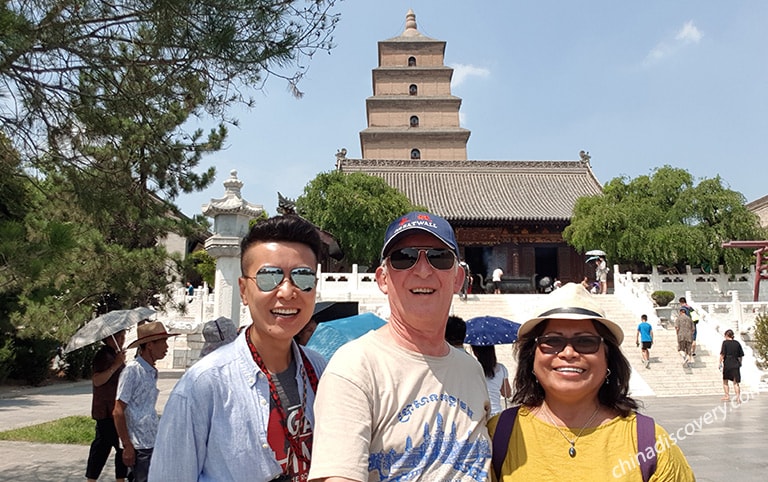 Our customers visited Big Wood Goose Pagoda
Our customers visited Big Wood Goose Pagoda
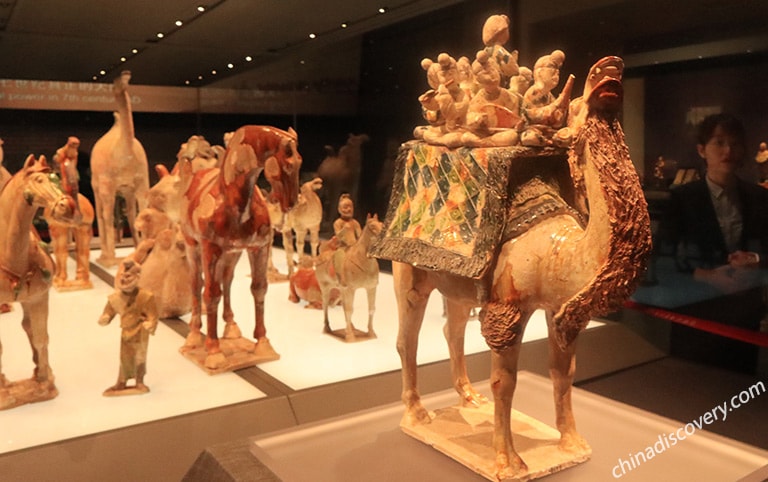 Collections in Shaanxi History Museum
Collections in Shaanxi History Museum
After breakfast, your guide will take you to visit Longmen Grottoes, which contains the largest and most impressive collection of Chinese art of the late Northern Wei and Tang Dynasties (316-907). The UNESCO World Heritage site is densely scattered on the cliffs of Mount Longmen (West Hill) and Mount Xiangshan (East Mountain) – on two banks of Yi River. West Hill houses the major caves with notable displays of Buddhist sculptures and calligraphic inscriptions. You won’t miss Bingyang Cave which tells a wealth of history and artistic value, including Guyang Vave with over 1,000 Buddha statues and 800 calligraphy inscriptions, and Fengxian Temple – the largest cave with a 17.14-meter-tall sculpture of Vairocana Buddha.
After the great sightseeing in Longmen Grottoes, drive to Luoyang Museum which shows ancient Luoyang from all perspectives. There are more than 1,000 exhibits dating back to the Tang Dynasty (A.D. 618 ~ 907) and even to the earliest prehistoric times (before the 21st century B.C.) in the informative display halls, such as exquisite tri-colored glazed potteries, various bronzeware, ancient clay sculpture, treasured calligraphy and paintings, etc.
Then head to the center of Luoyang to visit Tianzi Jialiu Museum. The burial of the royal horses and chariots that were sacrificed during Eastern Zhou Dynasty is earlier than that of Terracotta Warriors in Xian. Lastly, go to take a leisure walk on the ancient streets of Luoyang Old City. It is a lively place with many old residential buildings, food streets, and delicate shops. Just freely appreciate the splendor of old Luoyang, taste some local snacks or purchase some interesting souvenirs freely.
After the trip, drive back to your hotel.
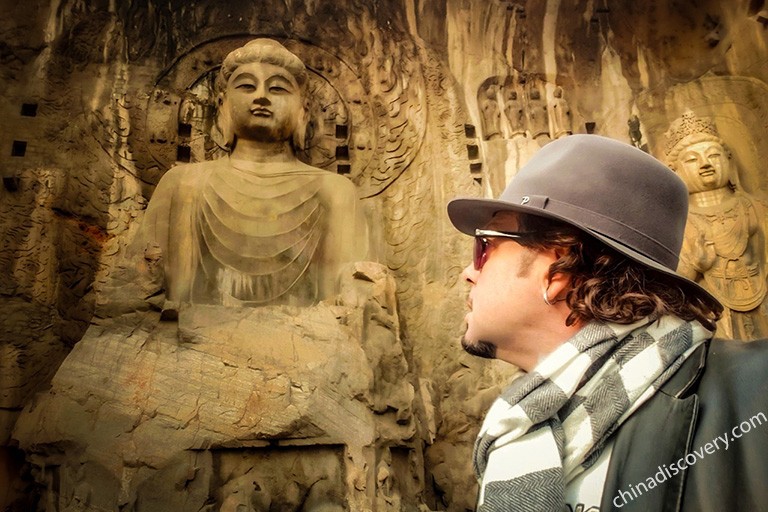 Longmen: A Treasure House of Ancient Buddhist Cave Art
Longmen: A Treasure House of Ancient Buddhist Cave Art
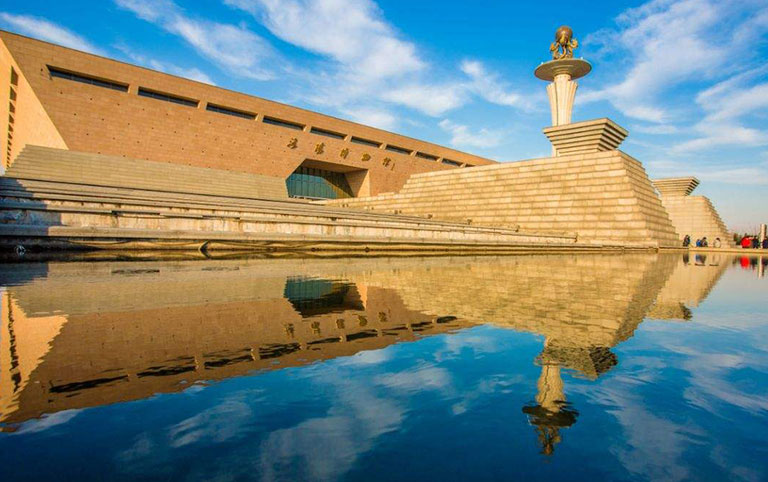 Luoyang Museum
Luoyang Museum
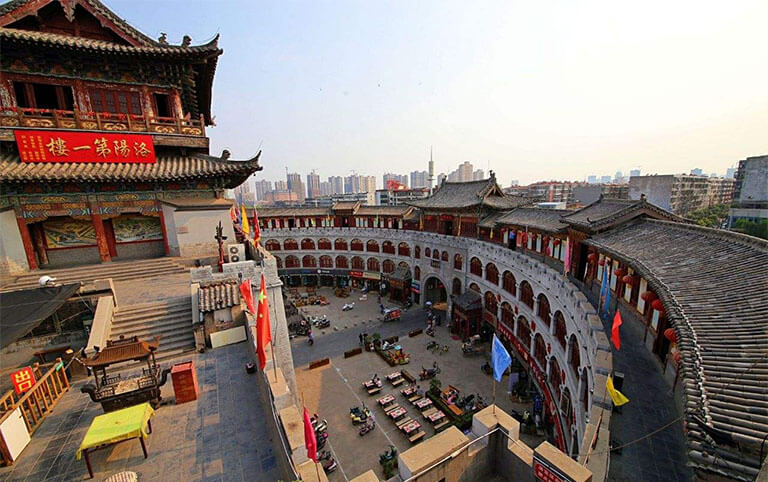 Luoyang Ancient City
Luoyang Ancient City
After breakfast, start today's trip with a visit to White Horse Temple, about 30 minutes' driving from central downtown. Established in AD 68 of Eastern Han dynasty, White Horse Temple is the first Buddhist temple in China with over 1900 years history. Since then, it spread the Buddhism throughout of China and regard as the cradle of Chinese Buddhism.
Then leave the White Horse Temple, and drive about 50km to the dream land for Kung Fu fans and Buddhist pilgrims - Shaolin Temple. Shaolin Temple, the birthplace of Zen Buddhism and the cradle of Kung Fu. You will visit the grandiose temples and halls, admire stone carving art, learn about Buddhism culture, observe the daily living and meditation of monks in the temple. Don't miss the famous Pagoda Forest, the existing largest pagoda forest in China. When an important monk passed away, their cremains or skeleton would be put into the underground palace, and a pagoda will be built on it. The pagoda's height, size and number of layers will be decided according to the monk's Buddhism knowledge, reputation and merits and virtues when during his lifetime. The pagodas here were built in different dynasties, including 2 Tang Dynasty pagodas, 2 Song Dynasty Pagodas, 10 Jin Dynasty pagodas, 46 Yuan Dynasty pagodas, 148 Ming Dynasty pagodas, etc.
Then continue your visit to enjoy a magnificent free Kung Fu Performance in the Shaolin Wushu Hall, lasting for half hour each day. Shaolin Kungfu was first created by Bodhidharma to exercise his body when he faced the wall and meditated. After that, in Tang Dynasty, most monks in Shaolin Temple would practice Shaolin Kungfu, and this phenomenon reached to its peak in Ming Dynasty, and the Shaolin Kungfu was spread to the outer world after that. You can enter the performance hall 20 minutes in advance, so it's better to get ther early to get a good seat.
After that, drive about 88km to Zhengzhou City for accommodation.
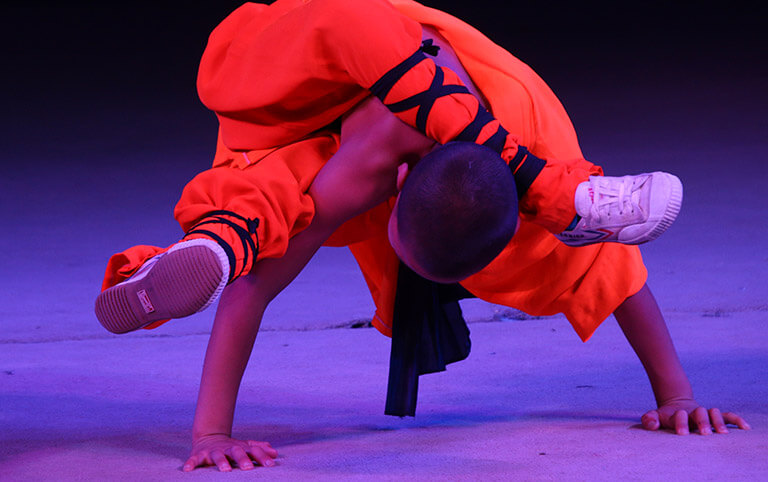 Shaolin Temple
Shaolin Temple
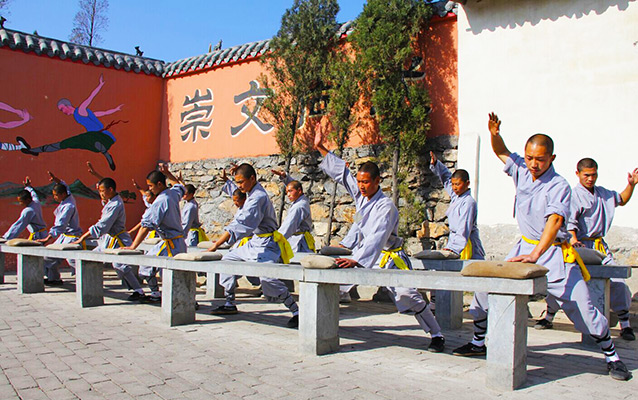 Excellent Kungfu Training at Dengfeng Shaolin Temple
Excellent Kungfu Training at Dengfeng Shaolin Temple
Be free until your guide and driver escort you to the airport or train station for the flight/train to the next destination or back home.
Located in the northwest of Gansu and the westernmost of Hexi Corridor, Dunhuang is the most brilliant pearl along the ancient Silk Road. The city has sealed huge art treasury and created oasis in the desert. You can closely see the fantastic Buddhist sculptures, murals in World Cultural Heritage - Mogao Caves, visit Crescent Lake surrounded by Mingsha Mountain, view unique Yardang landform, ancient passes and more impressive scenery here.
You can take a 2-day brief trip to Dunhuang covering top highlights. On the day 1, you can go to Echoing Sand Mountain and Crescent LakeE together, witness the wonder of nature, try some exciting activities, like desert camel riding, sand sliding, motorcycling, etc., later return to Dunhuang city to hunt for local flavors at Shazhou Night Market. Day 2 is fully for your Mogao Caves tour. First watch introduction movies about the caves in the Digital Exhibition Center, and then visit specific caves in Mogao Grottoes one by one, learning Buddhist story, Chinese culture and history, which you can’t help admiring this precious land of art.
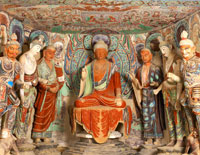
Shanghai, regarded as the Oriental Paris, is the best place to experience East-meet-West Culture, find hidden tradition within modernity.
Generally speaking, you can spend Day 1 exploring the popular landmarks of Shanghai, such as the Shanghai Museum, Yu Garden, Nanjing Road, the Bund, and Shanghai World Financial Center Tower. The Day 2 is for you to explore deep into the city of Shanghai (such as Old French Concession, Tianzifang or Jade Buddha Temple) and departure.
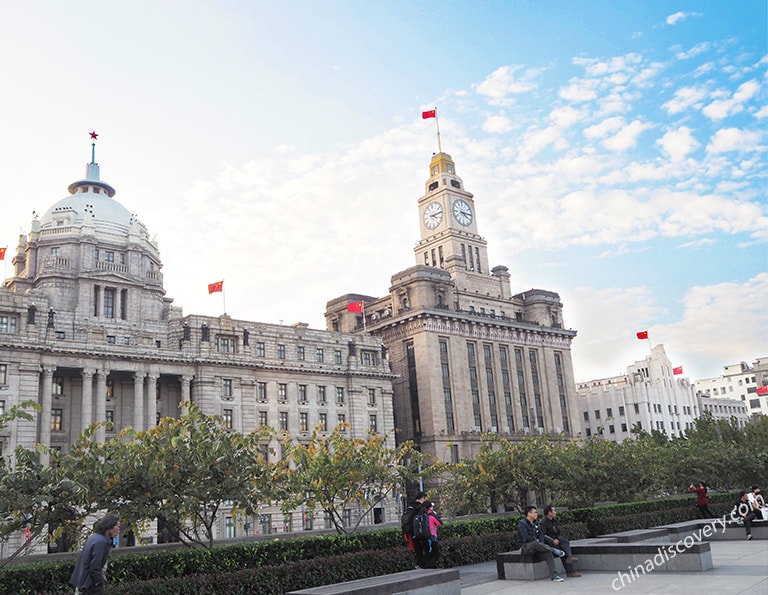
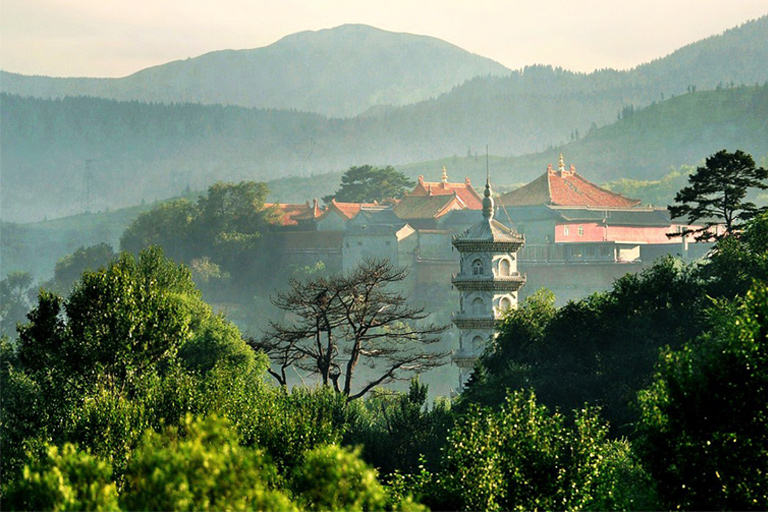
Datong / Wutaishan / Taiyuan / Pingyao
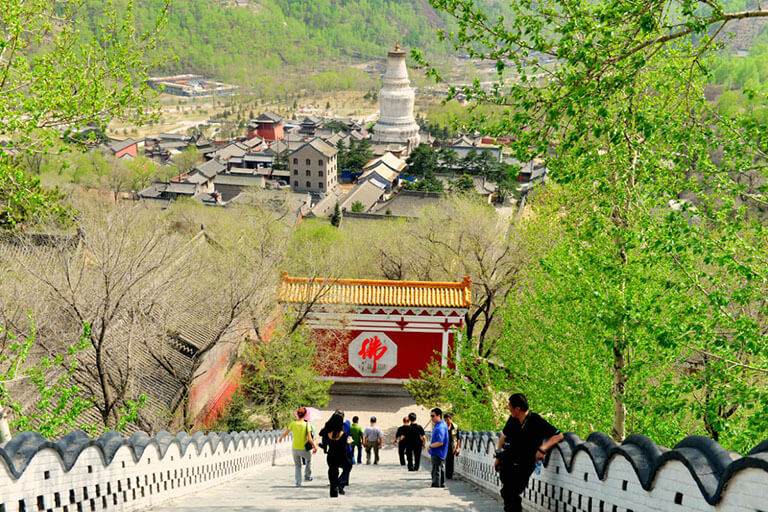
Beijing / Datong / Wutaishan / Pingyao
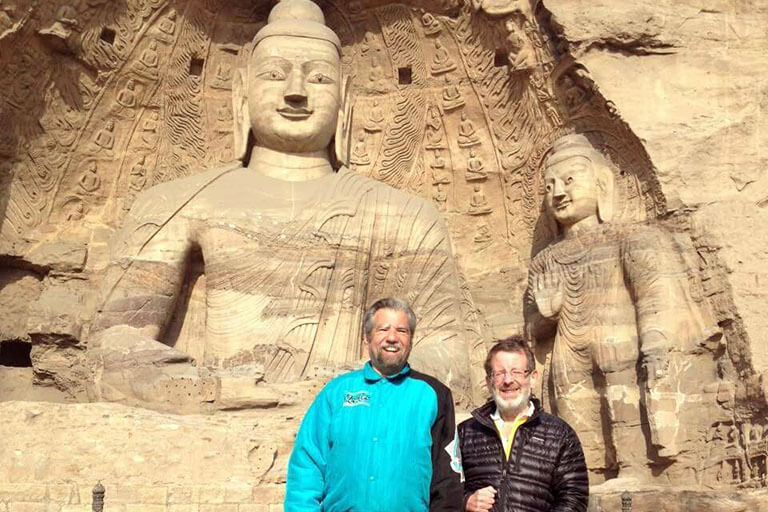
Beijing / Datong / Pingyao / Xian / Shanghai